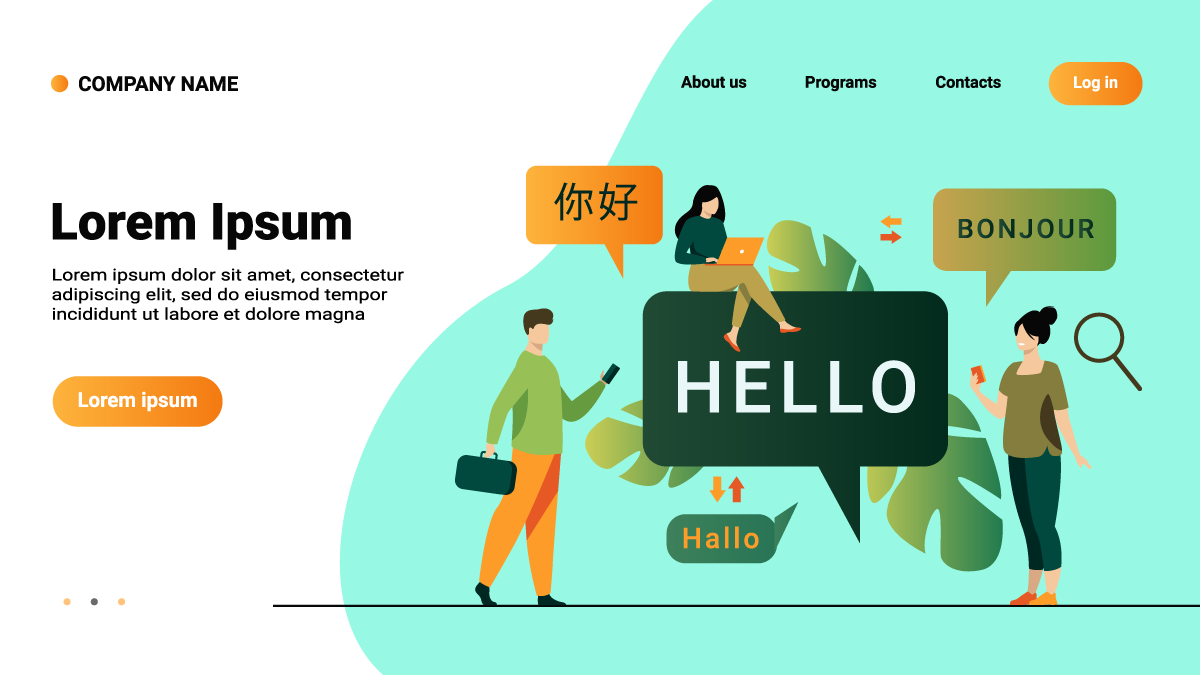
A multilingual site is a web resource adapted for users from different countries. The presence of high-quality translated versions of the site speaks to the company’s trustworthiness and showcases its concern for potential clients. It also allows companies to tell a wider audience about their products and services.
In this article, we will discuss how one creates a good multilingual website on their own. Keep reading to learn more!
Things You Need To Remember When Creating a Multilingual Website
Multilingual site creation includes specific actions and, as a rule, requires the participation of several competent specialists. Errors in this matter may go unnoticed at first, but will likely be detected by a foreign audience. To immediately make a favorable impression on website users, you should pay attention to important aspects of translation and the multilingual settings of your website.
1. Content on the page
The new version of your site is basically a blank sheet that needs filling with content. It is important to translate all web pages and possibly add extra content developed especially for foreign audiences.
Good content helps business owners present their products or services to foreign audiences from the best angle, and will also be an additional tool for promoting a website in another region through the use of new keywords.
2. Variability of the site structure
The creation of a new language version of a website involves the analysis and adaptation of content blocks on each page. This step is important because a list of services and available options for foreign users may differ depending on the country, for example, delivery terms or certain product types.
3. Translation of system messages
When translating a site, regardless of the CMS, you should pay attention to standard system messages that users receive. These include notifications about the movement of goods to cart, successful checkout, information about technical failures, as well as various email templates. Comprehensive translation of system messages is paramount, and it implies adaptation of all system messages, client forms, and email notifications by editing all corresponding files in the content management system.
4. Content translation
Content translation is a crucial step of multilingual website creation. Automatic means are not enough for accurate website translation. To reveal the best qualities of a company or its products, to motivate users to take action, you should entrust translation to professionals.
Special attention is required for narrowly focused materials, technical descriptions, legally important texts – this information must be handled by specialists, aware of the target country’s legislation and approved standards. Always outsource content translation to certified translation professionals and localization experts. They know how to make your content stand out on the foreign market.
5. Responsiveness of visual elements
Creating a new version of the site requires special attention to not just text. Also, its graphic components need to be taken into account – banners, infographics, photos, as well as interface elements, such as navigation blocks, buttons, client forms, etc.
In one language, phrases may look succinct and match the screen space allocated to them. However, translated versions can significantly exceed the text’s original length and go beyond visual components. Modifying an interface element implies editing this block in such a way that makes translated text fit into it and look harmonious.
6. Localization
Another step to multilingual website creation is localization. Translated materials often must be reworked, taking into account the target country’s cultural characteristics, design preferences, units of measurement, currency, time format, etc. Localized text will look as natural as possible in foreign user’s eyes.
7. Additional Content Translation
Translating a site into another language should include handling user-generated content such as reviews. You also need to translate warranty information, purchase and delivery rules, FAQ, etc. Converting corporate blog articles will be a useful step towards informing potential clients about products’ features, related products, enhancing their user experience. TranslationReport can aid with all your translation and localization needs. Also, try to avoid duplicate content.
8. Website optimization
To increase website traffic in the international segment, a new version must be adapted for search engines. Therefore, a crucial step when setting up a website in another language is technical optimization.
When creating the site’s new versions, you must designate them to the search engine. SEOs use hreflang attribute and a sitemap to make sure that an appropriate page is displayed to the corresponding audience in Google. For geotargeting, link names are also changed. They are URLs that contain text in the target language and mention of a region.
Start of a Splendid Multilingual Website
The steps we described will help ensure your multilingual website’s quality, as well as your company’s entire image in a new country and your new audience’s opinion about your business. This is why every forward-thinking businessman must be very cautious and attentive when attempting multilingual website creation.
BIO:
Merissa is a writer and content creator who is passionate about exploring trending topics and answering pressing questions her peers send her way. Working for several years as a translator gives her an edge when writing about linguistic matters that require specific expertise, which she has in abundance. Merissa’s readers would like to know that apart from work her passions are creative writing and photography.




